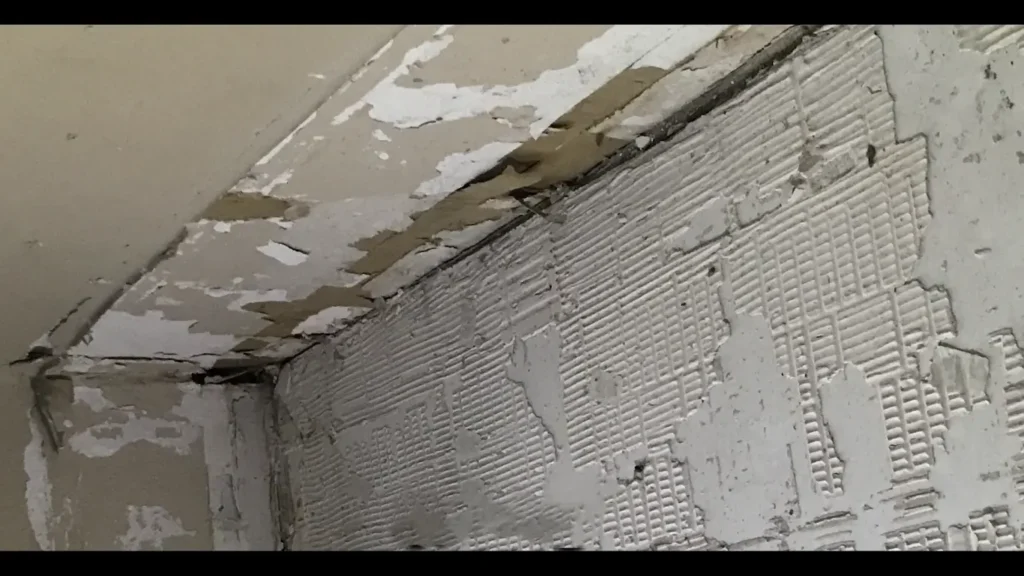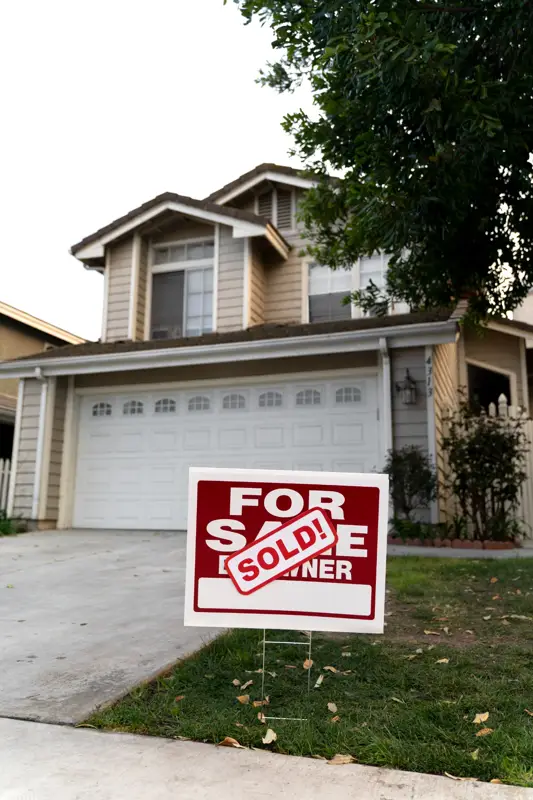In Ohio, it is legal to sell a house with asbestos. However, you must follow specific legal obligations, such as disclosing the presence of asbestos to potential buyers. Ensuring transparency and complying with state regulations is essential throughout the sale process.
When selling a house in Ohio, one common concern for sellers and buyers is the presence of asbestos. Asbestos, a naturally occurring mineral once widely used in building materials, has since been recognized as a health hazard due to its link to respiratory diseases, including lung cancer and mesothelioma. If you need help in Asbestos Removal Ohio , reach our Contact Page for More info
This raises an important question: can you sell a house with asbestos in Ohio? The short answer is yes, but several factors, regulations, and best practices must be considered. This comprehensive guide will explore Ohio’s laws, asbestos disclosure requirements, potential risks, and the options available for sellers.
What is Asbestos?
Asbestos refers to a group of naturally occurring silicate minerals mined and used extensively for construction due to their resistance to heat, electricity, and corrosion. Its use became widespread in building materials such as insulation, roofing, and flooring before the 1980s.
Unfortunately, when asbestos-containing materials (ACMs) are disturbed or damaged, they release fine fibers that can be inhaled, causing serious health risks over time.
Ohio Asbestos Regulation
State Requirements: Ohio has specific regulations for handling asbestos. According to the Ohio Environmental Protection Agency (EPA), any renovation or demolition that may disturb asbestos-containing materials must comply with state guidelines, which may include proper inspection, notification, and removal processes. Homeowners and sellers must understand their legal responsibilities if asbestos is present in their property.

Federal Requirements: Federal law also plays a role in regulating asbestos. The Environmental Protection Agency (EPA) and Occupational Safety and Health Administration (OSHA) have established regulations, including the Asbestos Hazard Emergency Response Act (AHERA) and the Clean Air Act (CAA), which require proper handling and disposal of asbestos materials.
Asbestos Regulations Residential Property
Asbestos regulations for residential properties primarily focus on safe management and removal. In Australia, under the Work Health and Safety (WHS) Act, asbestos is strictly regulated due to its hazardous nature. Homeowners must ensure that any asbestos-containing materials (ACMs) are properly managed.
A licensed asbestos assessor must inspect the property if renovations or demolition are planned. If asbestos removal is necessary, it must be carried out by a licensed removalist, especially for larger amounts of ACMs. Handling smaller quantities by unlicensed individuals is allowed, but strict safety measures must be followed, including appropriate protective gear and disposal.
Ohio Asbestos Regulations Federal Asbestos Regulations:
- The Ohio EPA must notify the state if asbestos removal Ohio is required. Regulated by EPA and OSHA
- Compliance with Ohio Administrative Code (OAC) Asbestos must be properly managed per AHERA and CAA
- Inspection before renovation/demolition Asbestos disposal must follow EPA guidelines
How to Sell a House with Asbestos in Ohio?
Selling a house with asbestos in Ohio requires careful planning and adherence to local laws and regulations. Asbestos, a hazardous material once commonly used in construction, can pose serious health risks if disturbed.
To successfully sell your home, it’s crucial to disclose the presence of asbestos to potential buyers. Ohio’s real estate laws mandate full transparency, meaning homeowners must provide information about any known asbestos in the property. Hiring a certified asbestos inspector to assess the situation and provide an official report may be beneficial.
Additionally, some sellers hire licensed professionals to remove or encapsulate the asbestos before listing the house, making the property more appealing.
Working with an experienced real estate agent familiar with Ohio’s housing market and asbestos regulations can ensure the sale process goes smoothly. While selling a house with asbestos can present challenges, proactive steps can help minimize risks and build buyer confidence.
Consider Asbestos Removal or Management:
Handling asbestos can involve removal or management, depending on its state. If the asbestos is intact, encapsulation or sealing may be suitable, while deteriorating asbestos usually requires professional abatement to ensure safety and regulatory compliance.
Documentation and Disclosure.
Keeping records of asbestos inspections and abatement work is a key part of selling a property with asbestos. Sharing this documentation with potential buyers ensures transparency, easing concerns and helping to facilitate a smoother transaction.
Pricing and Marketing the Home.
Pricing a home with asbestos requires a careful understanding of the market and the specific challenges posed by the presence of asbestos. Collaborating with experienced real estate agents can help develop marketing strategies that emphasize the home’s value while being upfront about its asbestos history.
Negotiating with Buyers.
Negotiations offer a chance to use transparency and detailed information about the asbestos situation to your advantage. Open communication and a willingness to be flexible can help align expectations between seller and buyer, resulting in a successful and agreeable deal.
Rules to Fix or Abate Asbestos In Your House.

Fixing or abating asbestos in your house involves strict guidelines to ensure safety and compliance with local regulations. Here are the key rules to follow:
Hire Licensed Professionals: In most areas, only certified asbestos contractors can legally handle asbestos removal or repair. Attempting DIY removal is highly dangerous and often illegal due to the health risks involved.
Obtain Necessary Permits: Depending on your location, you may need to apply for permits before beginning any asbestos-related work. Local health departments often oversee asbestos abatement activities and will need to approve the project.
Follow Proper Containment Procedures: When abating asbestos, it is essential to seal off the affected area to prevent asbestos fibers from contaminating the rest of the home. This includes using plastic sheeting, negative air pressure systems, and specialized equipment to control the spread of asbestos.
Use Appropriate Safety Gear: Anyone involved in asbestos removal must wear protective gear, including respirators, disposable suits, gloves, and eyewear. This reduces the risk of inhaling asbestos fibers or bringing them into other areas of the home.
Adhere to Disposal Regulations: Asbestos waste is classified as hazardous and must be disposed of at designated facilities. It cannot be thrown away in regular trash. Ensure the licensed contractor follows proper disposal procedures, including double-bagging and correctly labeling the material.
Conduct Post-Abatement Air Testing: An independent inspector should conduct air quality testing after the asbestos removal process to ensure no asbestos fibers remain in the air. This step is crucial to verify that the home is safe for occupancy.
Maintain Proper Documentation: Keep records of all asbestos inspections, repairs, or removal activities. This documentation is important for future home transactions and proves that the asbestos was handled in compliance with local regulations.
Let the Buyer Know of Asbestos Presence.
It’s essential to inform potential buyers about the presence of asbestos in your home to comply with legal requirements and ensure transparency. In most jurisdictions, including Ohio, sellers must disclose known hazards, such as asbestos, during the sale process. Please do so to avoid legal complications and liability issues.
To notify the buyer, include:
- Asbestos information is in the seller’s disclosure form.
- I am detailing the location.
- Condition.
- Any past inspections or abatement work conducted.
Providing a clear, documented history of asbestos assessments and any remediation efforts can help build trust with the buyer and reduce concerns about future risks. It’s also helpful to offer any relevant reports or test results from certified professionals, as these can clarify the condition and risk level of the asbestos.
Being upfront about the presence of asbestos demonstrates good faith and helps streamline the negotiation process, as buyers can make informed decisions from the outset.
1: Disclosure Requirements in Ohio
What Must You Disclose?
In Ohio, sellers are legally required to disclose any known environmental hazards on the property, including asbestos. While you are not obligated to test for asbestos if you don’t know it’s there, it must be disclosed if you know its presence. This transparency is crucial to avoiding legal complications down the road.
Legal Consequences for Non-Disclosure
Failure to disclose known asbestos can lead to lawsuits or financial penalties. Buyers who find undisclosed asbestos post-sale may seek compensation for any remediation costs or other damages incurred. Ensuring proper disclosure protects both sellers and buyers.
2: How Does Asbestos Affect Property Value?
Asbestos can affect your home’s value, but the extent depends on several factors, including its location, the amount, and the buyer’s perception. Here are the potential impacts:
- Negative impact on marketability: Some buyers may be reluctant to purchase a home with asbestos due to health risks and possible removal costs.
- Negotiation leverage: Buyers may use asbestos as a bargaining chip to lower the price or request that you cover removal costs.
3: Is It Better to Remove Asbestos Before Selling?
Deciding whether to remove asbestos before selling involves weighing the costs and benefits.
Costs of Removal
Asbestos removal costs in Ohio typically range from $1,500 to $20,000, depending on the extent of the asbestos and its location. A professional abatement company must be hired to ensure the safe removal and disposal of asbestos materials.
Pros and Cons of Selling “As-Is”
| Pros | Cons |
|---|---|
| You save on abatement costs. | The sale price may be reduced. |
| You may attract buyers willing to renovate. | It may take longer to sell the property. |
| The presence of asbestos may deter some buyers. |
4: Buyer Reactions and Negotiations
How Buyers Typically Respond to Asbestos?
Buyers may react in several ways to the discovery of asbestos during the inspection. Some may ask for the price to be reduced to cover the removal cost, while others may require that you remove the asbestos before closing. In rare cases, buyers might withdraw their offer altogether.
Negotiation Strategies.
When selling a house with asbestos, it is essential to be transparent with potential buyers and prepared for negotiations. You can offer to:
- Reduce the asking price.
- Provide a credit for the cost of asbestos removal.
- Handle the removal yourself before closing.
5: Managing Asbestos During a Home Inspection
During the inspection phase, if asbestos is suspected, the inspector will likely recommend further testing by an asbestos professional. As the seller, you can choose to:
- Have the property tested for asbestos in advance.
- Wait for the buyer’s inspection to reveal any issues.
Asbestos in Older Homes: Common Areas:
Asbestos was commonly used in homes built before the 1980s. Here are typical locations where asbestos may be found in an older home:
List of Building Materials with Asbestos
- Pipe insulation
- Roofing shingles
- Floor tiles
- Cement siding
- Popcorn ceilings
- Heat-resistant fabrics
Inspection Tips
If you’re unsure about the presence of asbestos, it’s wise to have a professional inspection before listing your property. This can help you anticipate buyer concerns and prepare accordingly.
6: What to Do If You Find Asbestos During the Sale Process?
If asbestos is discovered during the sale process, you have several options:
- Disclose the issue: Inform the buyer and offer to reduce the price or credit for removal.
- Negotiate removal: Arrange for the removal before closing, depending on the contract terms.
- Sell as-is: Continue with the sale at a reduced price to account for asbestos remediation.
Conclusion:
In conclusion, you can sell a house with asbestos in Ohio, but it requires careful planning, disclosure, and negotiation. While asbestos poses health risks, many buyers are still willing to purchase properties that contain asbestos if they receive appropriate compensation or the seller arranges for professional removal. Transparency is key to avoiding legal complications and ensuring a smooth transaction.
Do you have to declare asbestos when selling?
Yes, when selling a property or product that contains asbestos, it is legally required to disclose its presence to potential buyers. Asbestos is a hazardous material that poses serious health risks, such as lung disease and cancer, if disturbed or improperly handled.
In many jurisdictions, including Australia, the seller must provide clear information about any known asbestos-containing materials and any associated risks. Failure to disclose asbestos can result in legal consequences, as it violates health and safety regulations. Sellers must comply with these requirements to ensure buyer safety and to avoid potential liabilities.
FAQs:
1: Can a home be sold “as-is” with asbestos in Ohio?
Yes, a home can be sold “as-is” with asbestos, but full disclosure is required. Buyers may request a price reduction or asbestos removal.
2: Is it mandatory to remove asbestos before selling a house in Ohio?
No, it is not compulsory, but sellers must disclose the presence of asbestos if known. Removing asbestos may make the property more attractive to buyers.
3: How much does asbestos removal cost in Ohio?
Asbestos removal can range from $1,500 to $20,000, depending on the extent and location of the asbestos.
4: What happens if a seller fails to disclose asbestos in Ohio?
If a seller knowingly fails to disclose asbestos, they may face legal action from the buyer, including paying for remediation costs or other damages.
5: Can a buyer back out of a deal if asbestos is found during inspection?
Yes, buyers can back out of the agreement if asbestos is found and was not previously disclosed, depending on the terms of the purchase agreement.
Request a Free Quote
Connect us for More Info
Email: info@aiohomeservices.com
Phone Number: +1 714-600-1480
Address: 2011 Hout Rd, Mansfield, OH 44905, United States

Dr. William Pitman is a leading researcher and one of the foremost experts in asbestos testing and removal. With decades of experience in environmental science and public health, Dr. Pitman has dedicated his career to ensuring safe and effective asbestos abatement practices. His groundbreaking research has set industry standards for asbestos testing methodologies, helping to protect countless individuals from hazardous exposure. A sought-after consultant and speaker, Dr. Pitman combines scientific precision with practical expertise, making him a trusted authority in his field.
